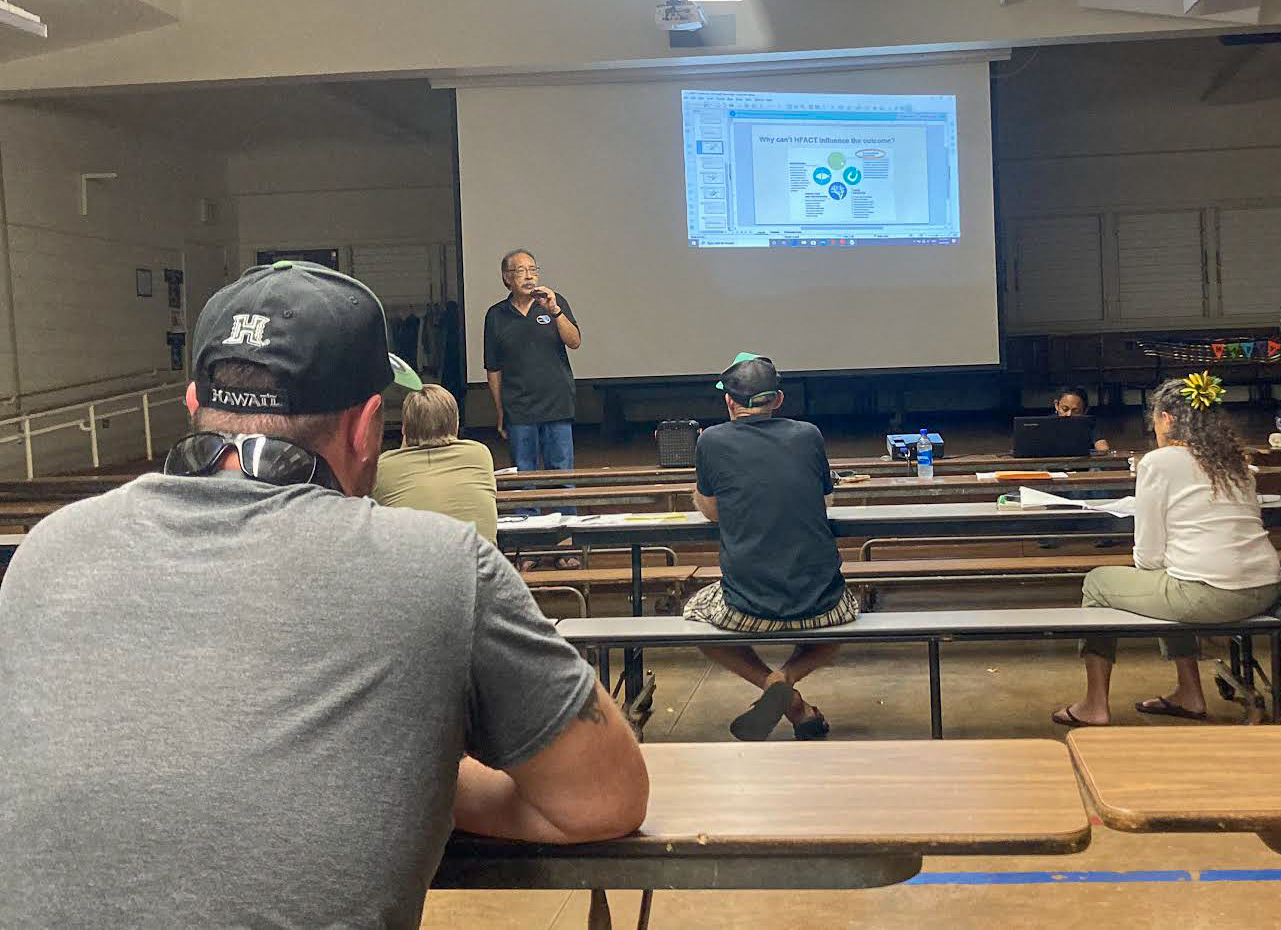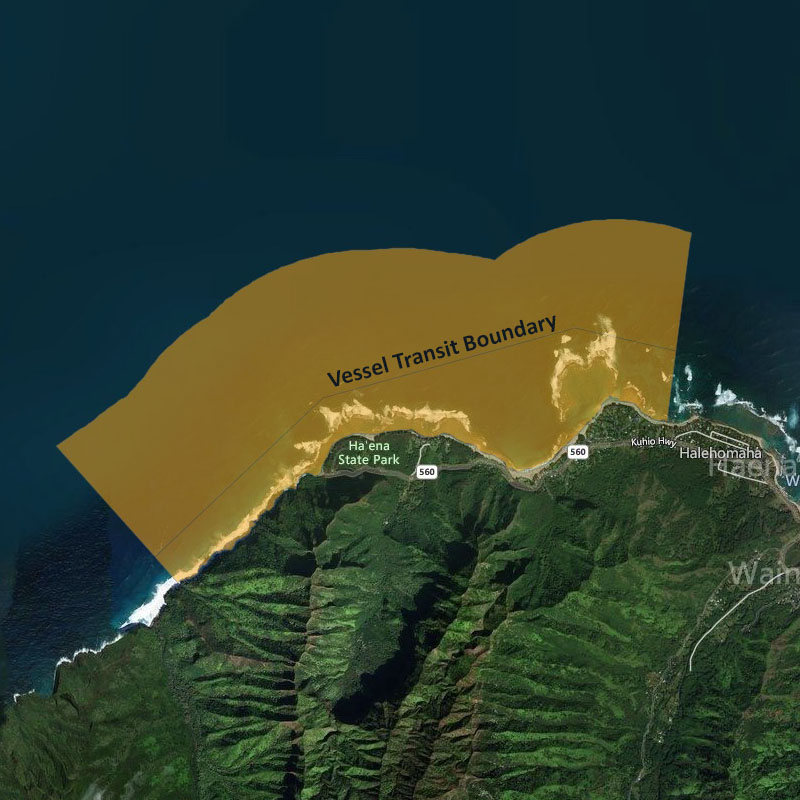Kauaʻi fishers urged to take part in state’s overhaul of nearshore water management
The State of Hawai’i is in the planning stages of overhauling nearshore water management on all major islands through a sustainability initiative called Holomua: Marine 30 x 30, which will affect fishers for decades to come.
Phil Fernandez, president of Hawai‘i Fishermen’s Alliance for Conservation and Tradition, is making sure the fishers on Kauaʻi know what is going on. He also is informing them about how they can be part of the process and have their voices heard.

“This is the biggest thing that is happening to fishing,” Fernandez told an audience of several dozen fishers in Lihu‘e on Tuesday night.
The initiative originated at the World Conservation Congress held in Honolulu in 2016, when Hawaiʻi Gov. David Ige announced a commitment to target “30% of Hawaiʻi’s nearshore waters to be effectively managed by 2030.”
The initiative is led by the Hawai‘i Department of Land and Natural Resources’ Division of Aquatic Resources.
Each major island will have its own marine managed area (MMA) with its own set of regulations. They could include daily bag limits, size limits, closures, bans on certain gear types or bans/limits on the take of certain species.
Currently, 6% of the state – and 3% of Kaua‘i – are already designated as marine management areas.
The largest existing marine managed area on Kaua‘i is, by far, the Hā‘ena Community-Based Subsistence Fishing Area located on the island’s North Shore. The regulated space encompasses the shoreline between Hā‘ena State Park and Wainiha, and extends one mile off the coast.

Smaller designated areas exist within the Hā‘ena Community-Based Subsistence Fishing Area. These include the Ōpihi Management Area, where the harvest of ‘opihi, pipipi, kūpe‘e and pūpū is permitted, and the Makua Pu‘uhonua. No one is allowed entry into the Makua Pu‘uhonua, which serves as a fish and coral nursery or place of refuge.
Fernandez’s two-hour presentation at Elsie H. Wilcox Elementary School marked the first stop in his advocacy group’s statewide Holomua Roadshow tour, which will visit each of the major islands over the next nine days.
The roadshow is not affiliated with the state Division of Aquatic Resources, which will hold its first series of Holomua meetings with the public sometime this fall and beginning on Maui. Dates and times will be announced online at dlnr.hawaii.gov/holomua/event/.
Fernandez, who sits on the 30×30 steering committee, said the Division of Aquatic Resources’ official vision for the 30×30 initiative includes a healthy nearshore ecosystem that will “support local livelihoods and feed our families.”
“This sounds pretty good, and one of the important things is making sure that this vision is actually seen through,” Fernandez said.
He urged attendees, which included State Senate President Ron Kouchi (Kaua‘i and Ni‘ihau), to attend the forthcoming Division of Aquatic Resources meetings.
Kouchi, a longtime politician from Kaua’i, didn’t mince words: “If you go out and play nice, then you’re bound to fail. You gotta understand this is a battle that you’re in.
“I still think a lot of the people fishing here in this current economy are subsistence … It’s hard to make ends meet and that’s why I’m here.”
Those in attendance expressed concern the 30×30 initiative will exacerbate existing fishing-access problems on Kaua‘i.
“We’re getting suffocated,” lifelong resident and recreational fisherman Isaac Moon told Kaua‘i Now.
Large swaths of the island’s fishing grounds are effectively closed off by large landowners, according to Moon.
“McBride is closed six months out of the year, sometimes eight … Mahaulepu has been closed for many years,” he said, referring to areas on Kaua‘i’s South Shore.
On the West side, Moon named beaches at Kaumakani, Pāʻulaʻula State Historical Park (formerly Russian Fort Elizabeth State Historical Park) and the Pacific Missile Range Facility as similarly closed to fishers or subject to restrictions.
“We gotta play the game,” Moon said of the initiative meetings between state personnel and the public. “They’re just killing us with all of this.”
Third-generation commercial fisherman Vakala Gay Jr. said he believes the Division of Aquatic Resources has good intentions. But he shares Moon’s concerns.
“We just gotta have this be known for us, because if not, we’re gonna lose it all,” Gay said.



